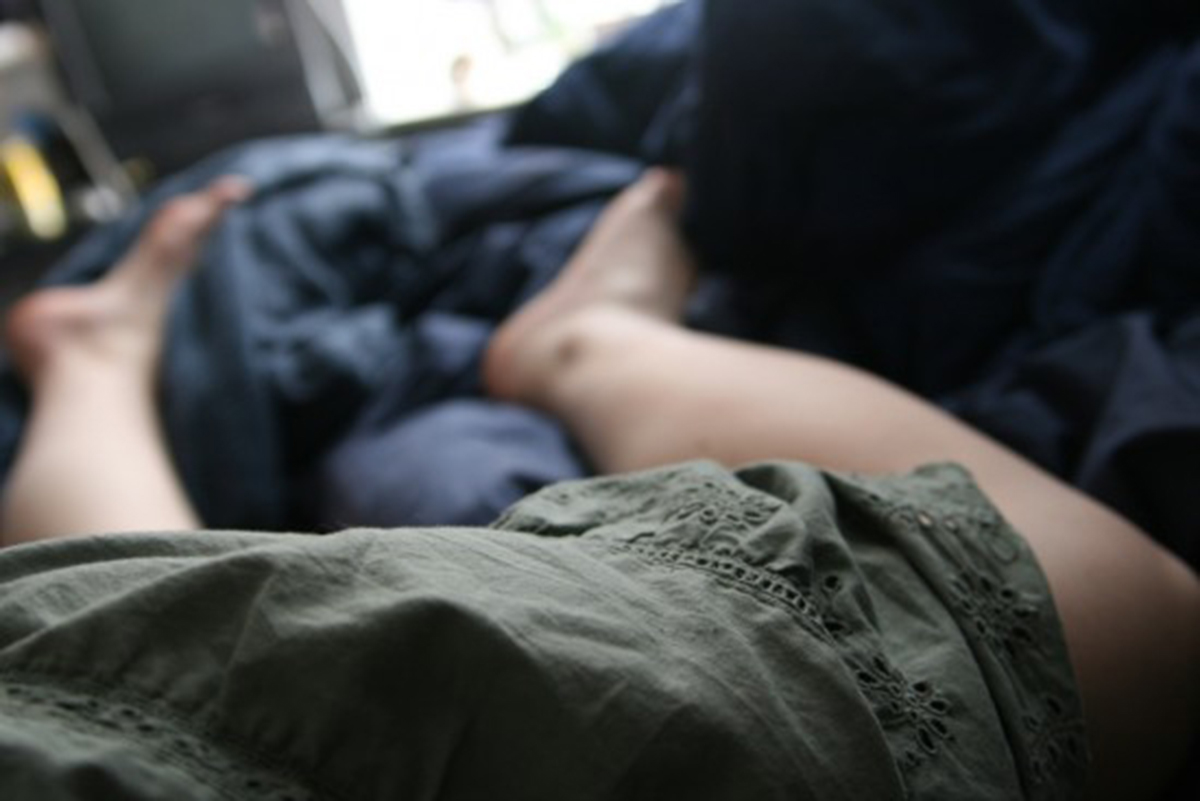Table of Contents
For the study, Dr. Allen observed the glutamate activity of 28 people who were suffering from RLS and 20 people who were not suffering from RLS by examining their MRI images. The RLS patients exhibited symptoms for 6-7 nights per week for at least 6 months. These patients had an average of 20 or more involuntary movements per night.

The study did not find any such association in people who were not suffering from RLS. Previous studies have shown that even though people suffering from acute symptoms of RLS get less than 5.5 hours of sleep per night, they do not feel sleepy during the day. Dr. Allen has said that this too can be attributed to the increased levels of glutamate which has the tendency of arousing the brain and excess levels can put the brain in a state of hyperarousal.
The implications of this study can be serious and can altogether change the way we look at ways to alleviate the symptoms of RLS. Sleepless nights are the worst-side effects of restless leg syndrome.
Symptoms of Restless Leg Syndrome
Some commonly observed symptoms of restless leg syndrome are listed below:
- A sharp pulling, tingling, drawing, bubbling pain beneath the skin in the calf area coupled with an irresistible urge to move the legs is a symptom of the restless leg syndrome.
- A number of people who suffer from the RLS also exhibit involuntary jerking leg movements while sleeping. These movements are also called periodic limb movements.
- The symptoms of restless leg syndrome get worse with advancement in age. At the beginning the symptoms of RLS appear once in a while and are relatively mild. However, as age advances, these symptoms become severe and patients might exhibit the symptoms on a daily basis.
- Other symptoms associated with the restless leg syndrome include severe insomnia, anxiety, depression, and a lack of social activity.
The symptoms of RLS are most pronounced when the person is relaxing and the legs are at rest. Most of the times, the symptoms are exhibited at night while the person is lying down.
In more severe cases, the symptoms are observed during the day when the person is sitting. When the person tries to ignore the symptoms of RLS, there is a buildup of tension in the muscles and eventually it results in uncontrollable jerky movement of the legs. People suffering from restless leg syndrome find it extremely difficult to travel for long durations of time while sitting in a car or an airplane.
Read More: Chronic Insomnia
Treatment of Restless Leg Syndrome Insomnia
Although dopamine-related medications have been found to be helpful to some extent, continued use of these drugs for long term might render the treatment ineffective. When patients are put on higher doses, symptoms tend to become even worse than before. It has been found that drugs that can help in reducing the levels of glutamate in brain, such as anticonvulsive gabapentin enacarbil, might be effective in curing the symptoms of RLS insomnia. These drugs can also be effective in the treatment of other forms of insomnia, not just RLS.
Medications such as pramipexole and ropinirole are dopamine agonists that can help alleviate RLS symptoms by increasing dopamine levels in the brain. Numerous studies have shown their effectiveness in reducing RLS symptoms and improving sleep quality. For example, a study published in the New England Journal of Medicine (NEJM) in 2004 reported that pramipexole significantly improved RLS symptoms and sleep quality compared to a placebo.
Iron deficiency has been associated with RLS, and in some cases, iron supplementation can help improve RLS symptoms. A study published in the journal Sleep Medicine in 2009 found that iron supplementation improved RLS symptoms in individuals with both RLS and iron deficiency.
Lifestyle changes that can help manage RLS symptoms include:
- Avoiding caffeine, alcohol, and tobacco, as these substances can worsen RLS symptoms.
- Regular exercise, particularly aerobic activities, has been shown to reduce RLS severity.
- Maintaining a regular sleep schedule and practicing good sleep hygiene can also help manage RLS-related insomnia.
- “Thalamic glutamate/glutamine in restless legs syndrome: Increased and related to disturbed sleep”, by Richard P. Allen, et al. Published in the May 2013, Volume 80 of Neurology, accessed on November 18, 2013
- “Low body stores of iron and restless legs syndrome: a correctable cause of insomnia in adolescents and teenagers” by Meir H Kryger, et al. Published in the Volume 3, Issue 2, March 2002 of the Sleep Medicine, accessed on November 18, 2013.
- Mindmap by steadyhealth.com
- Photo courtesy of Quinn Dombrowski by Flickr : www.flickr.com/photos/quinnanya/2441162455/
- www.neurology.org/content/80/22/2028
- www.neurology.org/content/80/22/2028
- dx.doi.org/10.1016/S1389-9457(01)00160-5


Your thoughts on this